How to Winterize a Boat
Winterizing your boat is important
As the summer boating season begins to wind down and temperatures start to drop, winterizing your boat is probably on your list of cold weather preparations for the fall. Cold temperatures cause residual water to freeze and expand, which can cause catastrophic damage to the engine and other components of your boat. Finding out a crack in the block has rendered the engine useless or your onboard septic system has been ruined would not be a pleasant surprise
The main goal of winterizing a boat is to remove any excess water from the engine, plumbing, and body to prevent freezing damage. Proper land storage is another step of the winterization process in areas where freshwater lakes freeze. Correct storage and water removal are the most important steps of winterizing a boat, but there are other precautions you can take to keep it safe during the winter months
General winterization
Regardless of the engine in your boat, these same winterization steps apply. Following these steps will provide the best protection against freezing damage. The steps and process, later on, will become more specific depending on the drive type of your boat.
Oil Change
After running all summer long, moisture and other impurities can end up in the engine’s crankcase. Changing the oil and filter will ensure that no surprise damage to the engine internals will occur when the weather gets cold. Be sure to run the engine for a few minutes before doing the change. The warmer and more viscous oil will be easier to remove and ensure more contaminants go out with it. When replacing the filter, be sure to prime it by filling it with fresh oil and coating the gasket to ensure it seals properly.
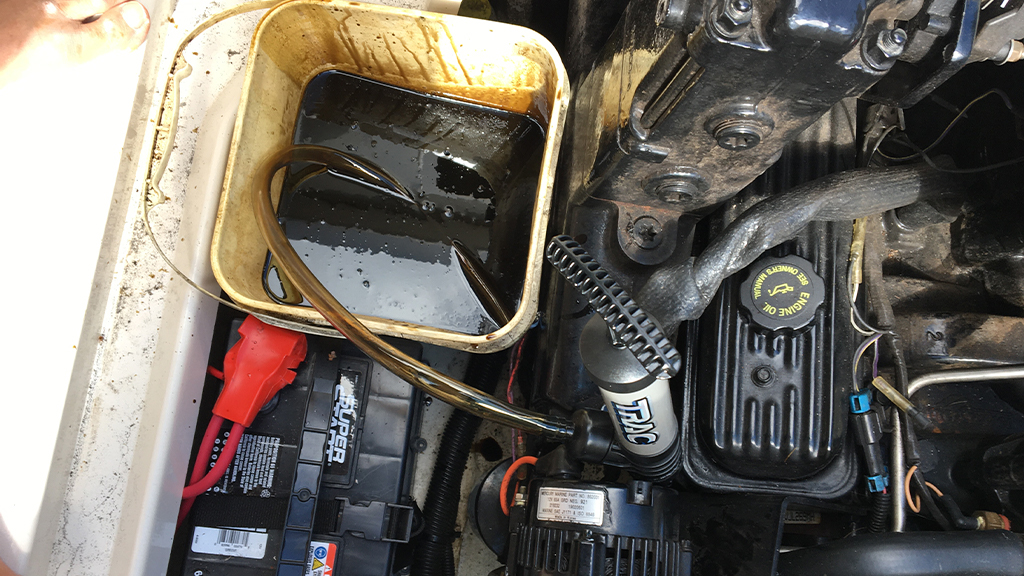
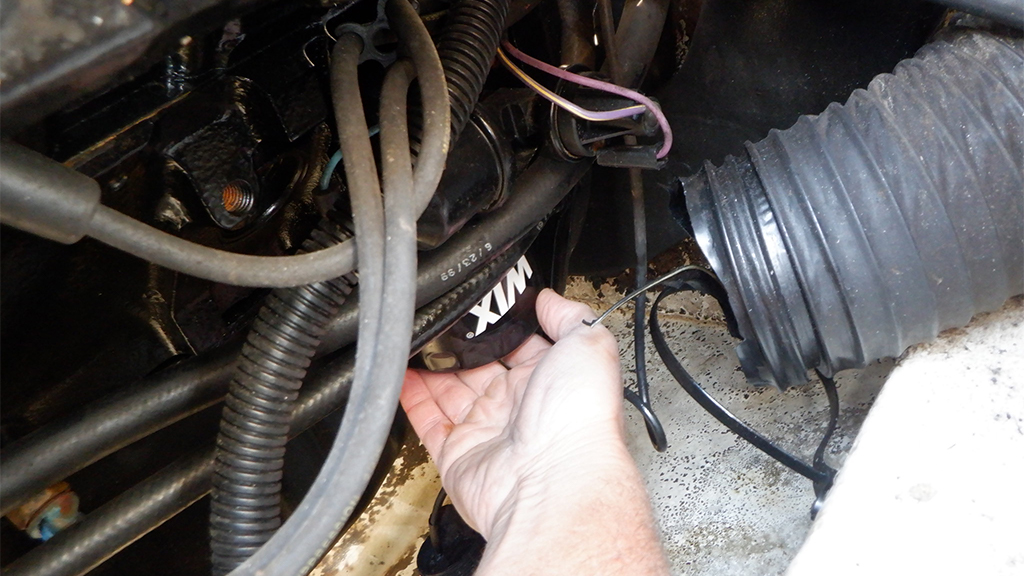
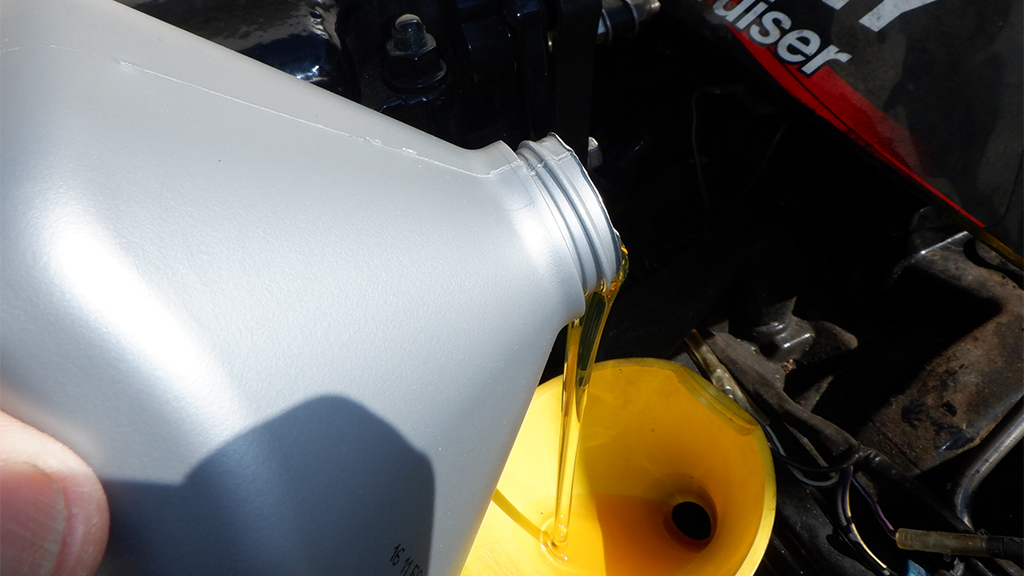
Stabilize the fuel tank and change the fuel filter
Water in the fuel tank can be disastrous for an engine. Unfortunately, the ethanol additives in modern gasoline can cause issues when it sits over for long periods (like during the winter months). As it sits, a process known as phase separation can occur. Ethanol absorbs a lot of water, and phase separation happens when the ethanol absorbs enough water to separate from the gasoline. This process will create two distinct layers, gasoline on top and a layer of water and ethanol on the bottom of the gas tank.
Many issues can arise when attempting to run an engine with phase-separated fuel. In some cases, the engine may simply not start. However, damage can occur when the engine is running, and suddenly takes in the ethanol/water mix instead of gasoline. Water in the combustion chamber can hydro lock the motor, potentially destroying the engine. A more common issue with phase-separated fuel is poor performance and operation.
The only guaranteed way to prevent phase separation is to completely drain the gas tank before storage, but this is not always convenient or possible on a boat. A much easier solution is to add gas to the tank to around 95% full. As temperatures change fuel expands and contracts, allowing excess water to enter the tank. A full gas tank has a lot less “breathing” room, and can not take in as much water as an emptier one.
In addition to filling the tank, adding a fuel stabilizer will also help prevent phase separation. A fuel stabilizer increases the threshold of phase separation, allowing more water to be absorbed into the gasoline without the ethanol separating away.

By adding a fuel stabilizer and storing your boat with a nearly full gas tank, the likelihood of phase separation occurring during the winter will be significantly reduced.
Engine fogging and cylinder protection
“Fogging” the engine is a process that protects its internals from corrosion. It is done with a waxy fogging oil that is sprayed into the engine intake/carburetors while it is running to fully coat the pistons, piston walls, and other components
You can use the fogging process as an opportunity to run stabilized fuel through the engine as well. Let the motor run for a few minutes and begin spraying fogging oil into the carbs/intake. As the engine burns off the fogging oil, it will begin to choke, and white smoke will come out of the exhaust. Continue spraying fogging oil in bursts for a few minutes, and eventually choke the engine out with it
An extra precaution can be taken by removing the spark plugs and spraying fogging oil into each cylinder. After this, turn the engine over by hand or with the starter, but do not start it.
Winterizing the drive and cooling system
Just like winterizing the engine and fuel tank, the primary focus of prepping the drive for the winter months is removing water. Water in the engine block can quickly cause severe damage if the temperatures drop below freezing. Depending on the drive type, the winterization process can vary from boat to boat due to variations in the cooling system.
Winterizing inboard boats
Raw water-cooled inboard:
A raw water-cooling system cools the engine by taking in water from the lake or ocean and running it directly through the engine. The cool water absorbs heat and is then expelled back into the lake or ocean. With water running through the entire engine, winterizing a raw water-cooled system needs to be done with care to prevent freeze damage.
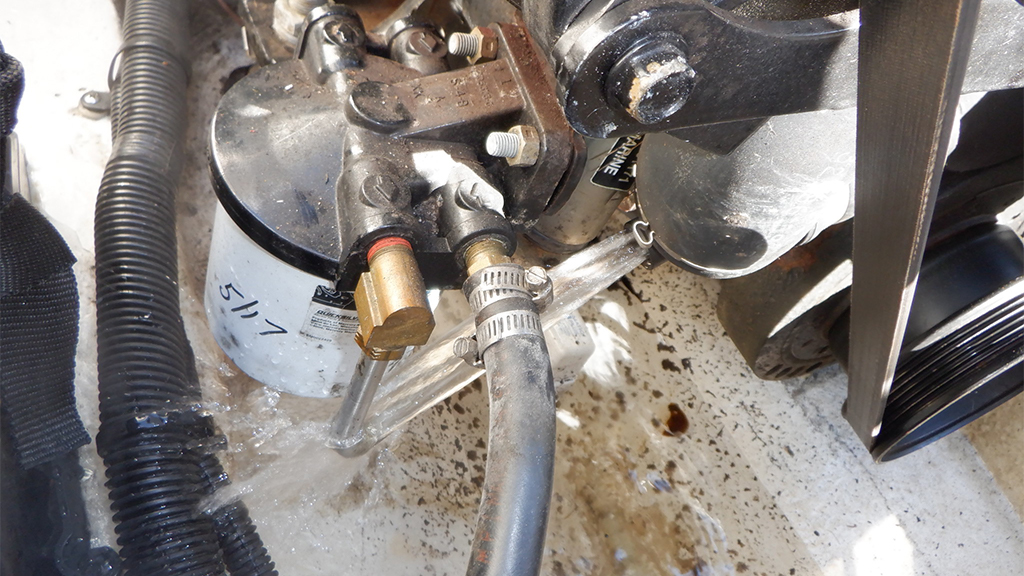
Winterizing a raw water-cooled engine can be done in two different ways; dry storage and antifreeze. Dry storage is done by draining all water from the engine and storing it empty. While simple, this method can lead to issues if pockets of water remain trapped within the engine. Blasting pressurized air through the motor can help eliminate these water pockets, but there is no way to know for sure if all water has been removed. When draining the engine, it is critical to clear debris from all petcock, seacock, and other valves to ensure all water is removed.
A more effective method for winterizing raw water-cooled systems is to run the engine and pump antifreeze into the block. Like before, drain the water out of the block.

Using an antifreeze that meets the manufacturer’s recommendations, allow the engine to take in antifreeze from an external reservoir. Remember that until the engine is up to temperature, the thermostat will stay closed on some engines. Waiting until the engine is warm before introducing the antifreeze will ensure complete protection.
Watch the exhaust until the liquid exiting the engine matches the color of the antifreeze, then shut off the engine. The engine is now ready to be laid up for the winter.
Closed system inboard:
Some boats use a cooling system that combines the water circulation of the raw water system, and the conventional closed-circuit coolant system found in cars. This system uses a heat exchanger (the marine equivalent of a radiator) that allows engine coolant to come in close contact with cold lake/ocean water, extracting heat. Winterizing a boat with this type of cooling system is simpler than conventional raw water setups. The lake/ocean water side of the system is winterized by pumping in antifreeze exactly like a raw water setup.
The engine block itself will be protected from cold temperatures year-round due to its supply of conventional coolant. It can be beneficial to change this coolant, but it is not required to protect the boat from cold temperatures.
Winterizing sterndrive boats
When winterizing inboard/outboard boats, it is important to determine if your boat takes in water through the lower unit (outdrive) or through the hull. Boats that take in water via the lower unit will need to use muffs to pump water into the engine while it is operating out of the water. Sterndrive boats with this style of water intake will follow slightly different winterization steps than boats with through-hull intakes.
For boats that require muffs, run the engine until it is up to temperature. Run tubing from the muffs to a bucket of antifreeze and allow the engine to take in the coolant until you see it coming out of the exhaust.
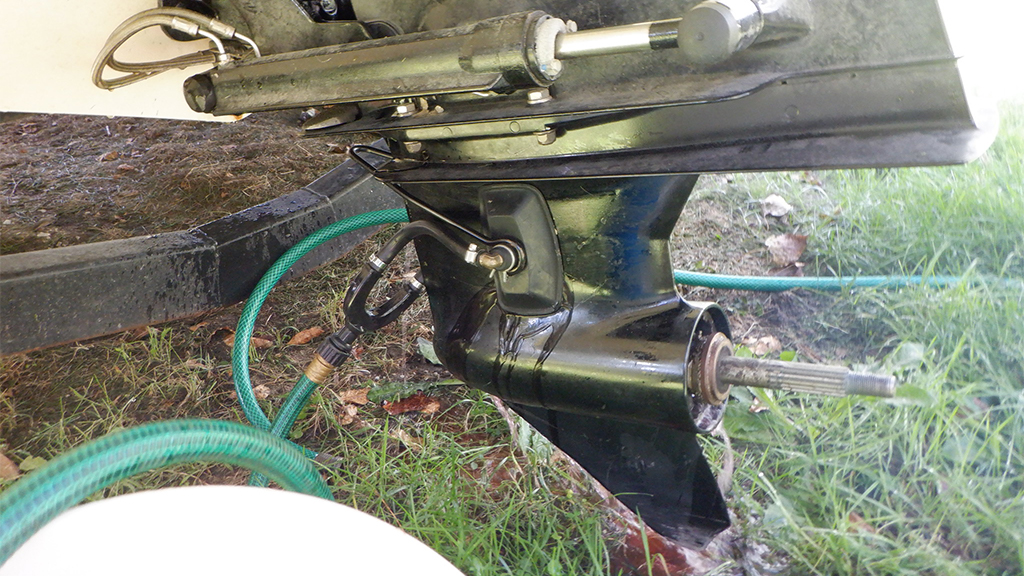
At this point, the engine and lower unit have been filled with coolant and prepped for winter storage. For boats with through-hull intakes, follow the same steps and allow antifreeze to enter the engine and lower unit via the hull.
Sterndrives require prepping the lower unit for storage. The process of winterizing the lower unit can vary depending on the brand. Generally, greasing the moving components through grease fittings. Changing the gear lube should be done yearly. Milky gear lube can indicate water is present in the unit and a pressure test will be needed to find the bad seal.
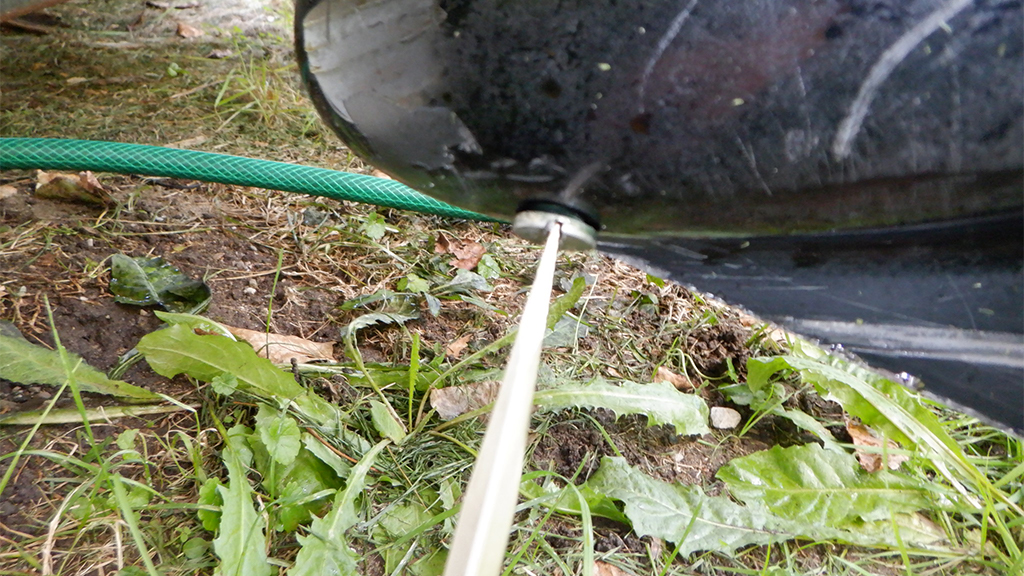

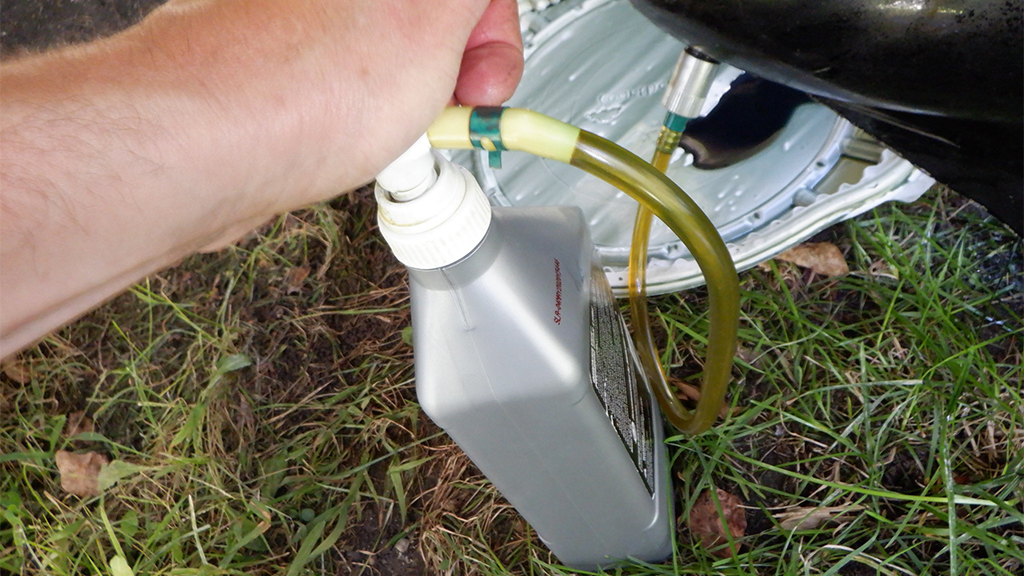
Winterizing outboard boats
The steps for winterizing an outboard vary depending on the make and model, but the general procedure follows a similar path to what is done for inboards and sterndrives. Change engine oil, gear oil, stabilize the fuel supply and run antifreeze through the engine. Look at the manufacturer’s recommendations for winterizing to be sure you are preparing it for lay-up properly.
Winterizing jet drive boats
Much like outboards, winterizing a jet drive varies depending on make and model, so make sure to consult the owner’s manual or manufacturer website to make sure you are following the right steps. For smaller watercraft like jet skis, winterizing consists of stabilizing the fuel, and running the engine out of the water for short stints to blow any remove excess water from the jet system. For larger boats running jet drives, winterizing may need to be done by a professional.
Marine Plumbing
Engine damage is the most common result of improper winterization, but there are other areas of the boat that can retain water, leading to potential freeze damage.
Marine Head:
If your boat has an onboard toilet or marine head, it is crucial to winterize this system to prevent freeze damage. The steps for winterizing the marine head and septic system on a boat are pretty straightforward:
1.) Start the process by emptying the holding tank and running fresh water through it. This step ensures the system is clean and sanitized when you take your boat out next season.
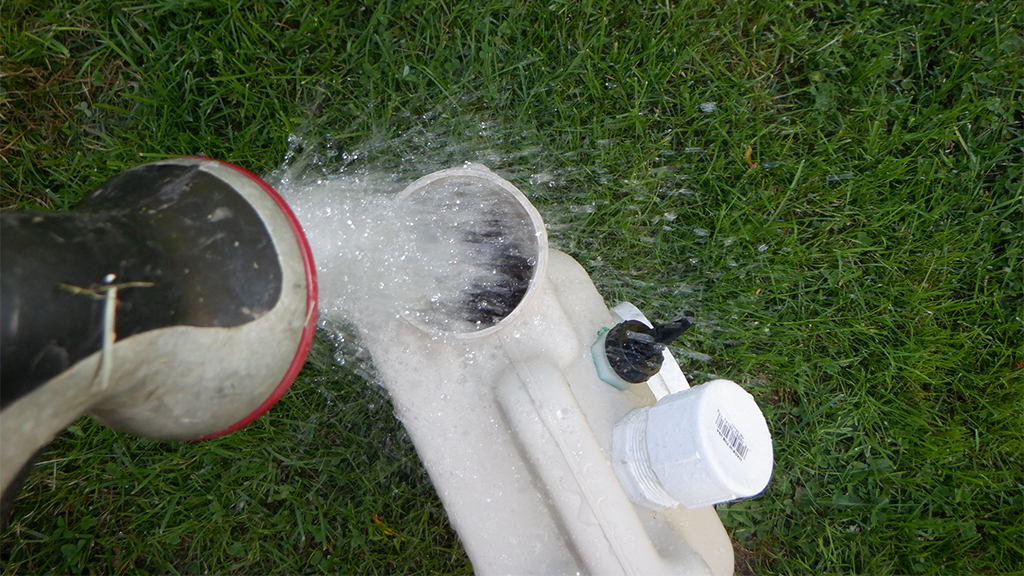
2.)Next, run antifreeze through the marine head by removing the raw water intake hose from the seacock valve and putting it in a reservoir of antifreeze. Some boats use a closed system instead of raw water. In this case, empty the water supply and replace with antifreeze. Flush the head to suck antifreeze from the bucket into the septic lines and holding tank
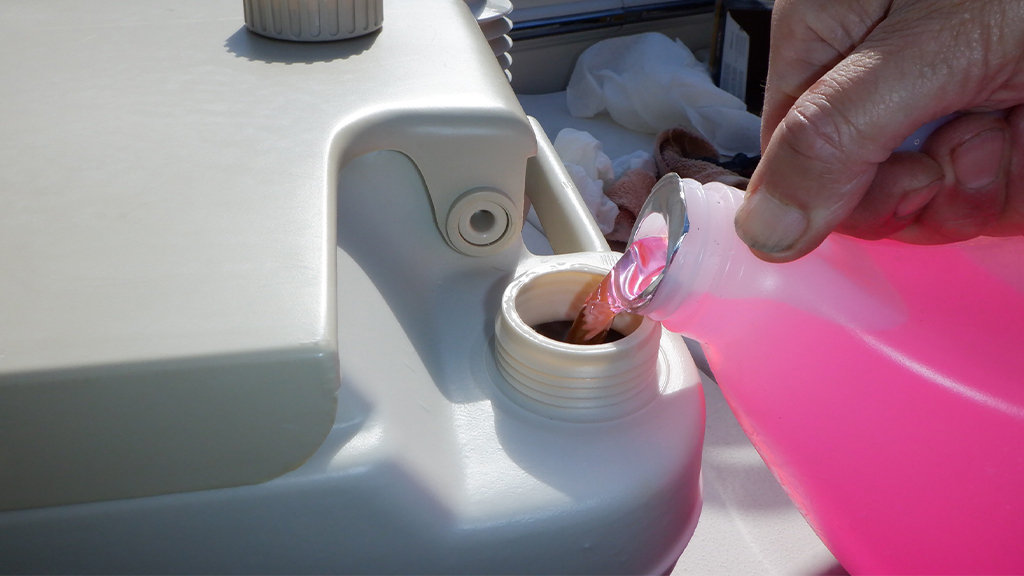
3.) Close off the seacock and double-check raw water strainers to ensure they have antifreeze in them.
Fresh Water System:
The process for winterizing a boat’s freshwater system is relatively simple.

The steps are as follows:
1.) Begin the process by turning on the water pump and allow all water fixtures to run until the tank is empty. Fill it with antifreeze and turn on the hot water side of the water fixture the greatest distance from the water pump.
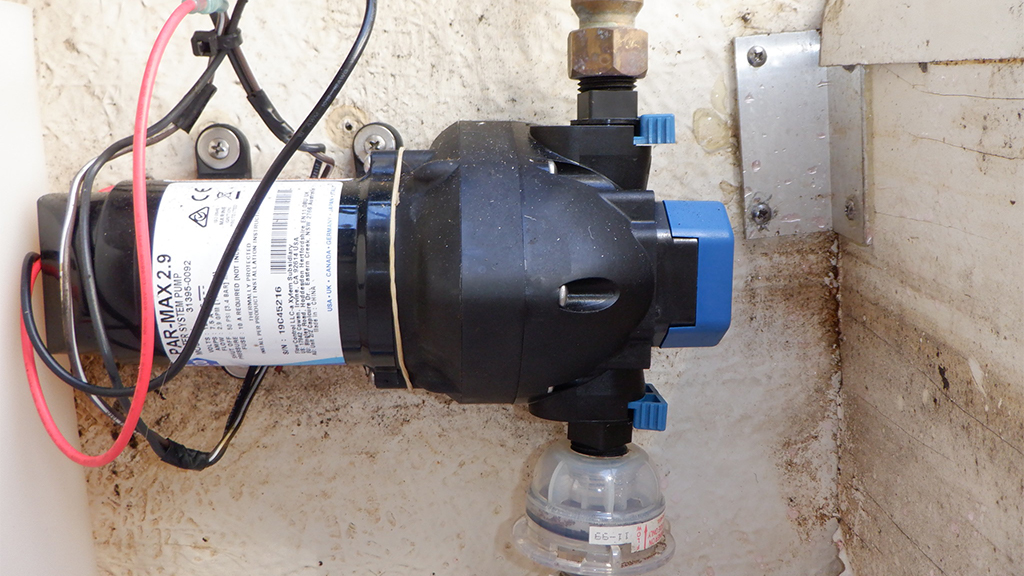
2.) Once antifreeze is flowing from the fixture, close the hot side and open the cold, repeating the process until antifreeze comes out.
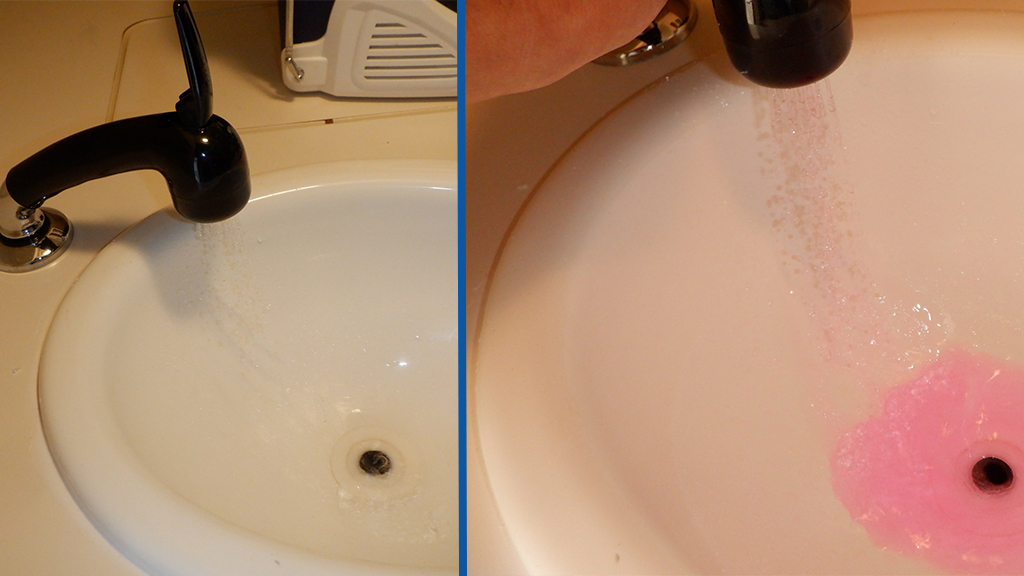
3.) Repeat this process from the furthest fixture back to the one closest to the water pump, remembering to do sinks and showers. Once the antifreeze is flowing from all fixtures, the system is ready for winter storage.
What antifreeze should I use to winterize my boat?
Remember to use nontoxic antifreeze. Many lakes double as water supplies for communities, and all bodies of water are homes to animals and support ecosystems. Additionally, using a toxic antifreeze in your boat’s drinking water storage system is not a great idea. RV antifreeze is a good choice to use for boat winterization. It’s made with either propylene glycol or ethanol, making it nontoxic to the environment and people. Closed system inboards utilize a traditional toxic coolant in the engine, but this will not be at risk of entering the boat’s fresh water supply or the lake, as it remains in the engine circuit.
Storage:
There are several ways a boat can be stored while it is laid up for the winter. Storing your boat safely is as important as other parts of the winterization process to prevent external damage during harsh winter weather.
Cover it up:
This one may be obvious, but ensuring your boat is properly protected with either a fitted over or well-secured tarp will protect it from the elements. If you choose to use a tarp instead of a fitted cover, remember to make sure it fits snug. Any loose material can become a trap for rainwater or snow, which can weigh down the tarp. This additional weight can add stress to the supports used to store your boat as well.
Location:
If you are storing your boat on your property, try to lay it up at a distance from roofs and trees. Roofs can poor large quantities of water onto a boat throughout its layup period. Trees bring several hazards to boats such as damage from falling branches and sap dripping on to the boat.
Types of Storage:
Cradles
A cradle is one of the most secure ways to store a boat. Cradles support the heaviest parts of the boat body and allow it to sit safely upright while out of the water
Jack stands
Jack stands are a cost and space effective solution. When using jack stands, it is important to know the areas of your boat’s hull that need the most support. To provide stability in high winds, jack stands need to be placed at the widest possible points on the boat. Lastly, if solid concrete or packed dirt is not available, using plywood underneath the jack stands will prevent them from sinking when the ground gets wet.
Trailer
If you trailer your boat to and from the lake, leaving it on the trailer during the winter can be a secure solution. The trailer will support all the critical points of the boat during windy or muddy conditions, much like a cradle. The trade-off is security; a trailered boat can be stolen much easier than one in a cradle or on jack stands. Have a secure yard, garage or barn will keep the risk of theft low.
Storage Racks
Dry storage racks offer stable and secure storage. Storage racks can store many boats together . If you are uncomfortable with laying your boat up on your property, dry storage racks might be a good solution.
Lifts
For those with lakeside property, storing your boat on a lift by the water makes the transition from lay-up to boating season much easier. Rain and snow can add significant weight to the boat and potentially break the lift. Additionally, lifts are not stable in high winds. If you live in an area that sees harsh winter weather this storage method may not be best.
Other tips
Check on your boat
This is probably the easiest preventive step you can take to ensure you don’t run into any problems. Visit your boat every few weeks during the winter or immediately following bad weather. Check the cover for tears or water/snow buildup. Make sure the support system you are using is keeping the boat level. Tighten the cover and remove built up water and snow to keep stress off of the supports.
Do you need help winterizing your boat?
We are boat experts at Matson Auto and Marine. Our skilled technicians can assist you with any winterization needs, backed by a guarantee if the winterization is done before the first freeze of the year. Give us a call or schedule an appointment today!
Download a copy of our boat winterization checklist to help you through the process if you do it yourself!
